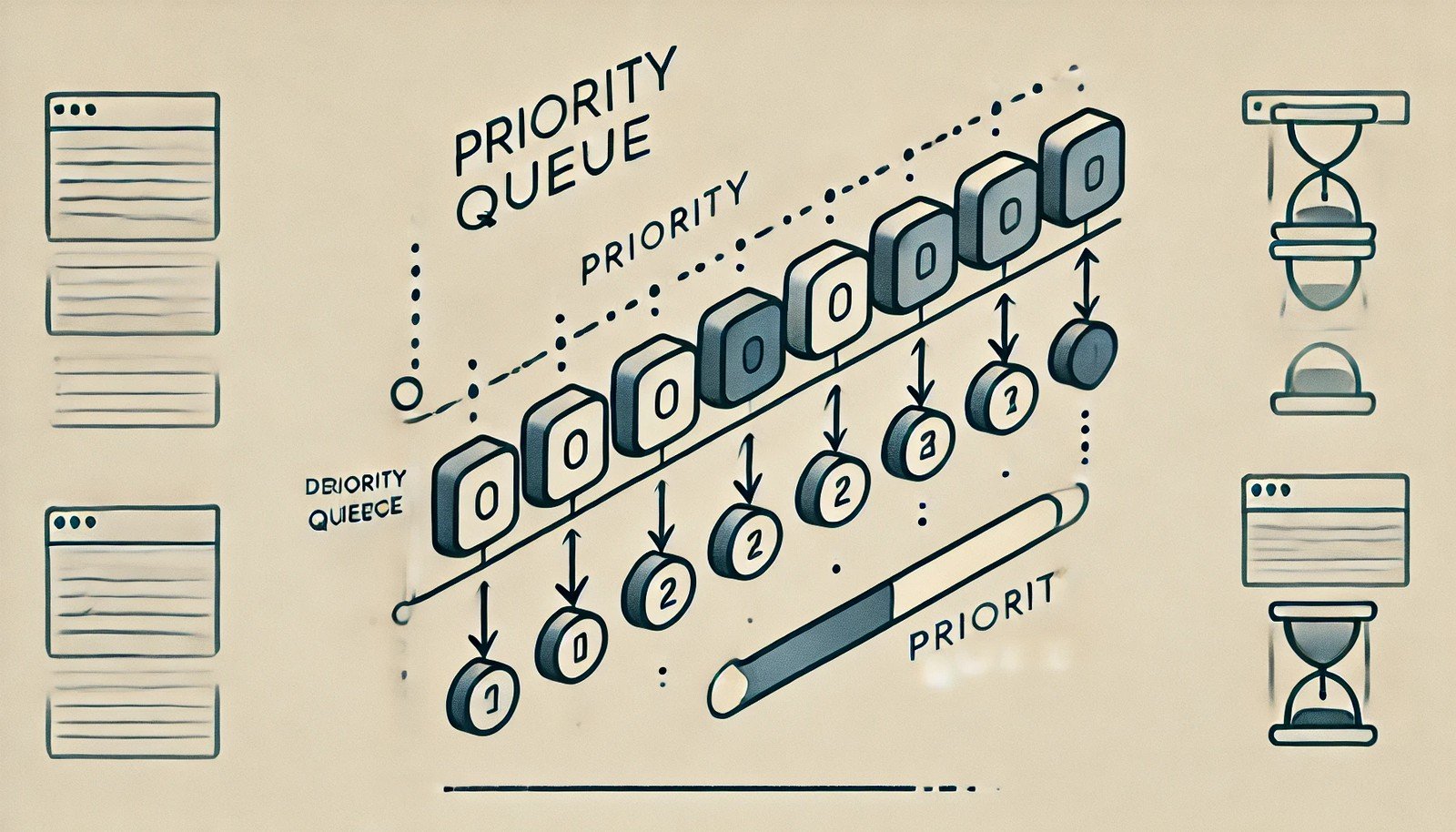Priority Queue

(Representational Image | Source: Dall-E)
Quick Navigation:
- Priority Queue Definition
- Priority Queue Explained Easy
- Priority Queue Origin
- Priority Queue Etymology
- Priority Queue Usage Trends
- Priority Queue Usage
- Priority Queue Examples in Context
- Priority Queue FAQ
- Priority Queue Related Words
Priority Queue Definition
A priority queue is an abstract data structure similar to a regular queue or stack, but with an added feature—each element has a priority. Elements with higher priority are dequeued before elements with lower priority, regardless of the order they were added. Priority queues are commonly implemented using heaps and are widely used in algorithms like Dijkstra's shortest path and task scheduling.
Priority Queue Explained Easy
Imagine you’re at a theme park, and there’s a VIP line. VIPs get to ride first, even if they came after others in the regular line. A priority queue works like that—some items are more important (VIPs), so they get processed first.
Priority Queue Origin
The concept of a priority queue originates from the field of computer science and combinatorial optimization. Early applications include job scheduling in operating systems and network packet routing, where priority significantly impacts performance.
Priority Queue Etymology
The term "priority queue" combines "priority," indicating the importance or rank of elements, and "queue," which represents a line or sequence.
Priority Queue Usage Trends
Priority queues have grown in importance with the rise of real-time systems, artificial intelligence, and large-scale data processing. They're vital in networking, task scheduling, and optimizing computational tasks where managing priorities is crucial.
Priority Queue Usage
- Formal/Technical Tagging:
Data Structures, Algorithms, Computer Science - Typical Collocations:
"priority queue implementation," "priority-based scheduling," "heap-based priority queue," "queue with priorities"
Priority Queue Examples in Context
- In Dijkstra's shortest path algorithm, a priority queue manages which node to process next based on its distance from the starting point.
- Operating systems use priority queues to manage process scheduling, ensuring high-priority tasks are completed first.
- Network routers use priority queues to prioritize time-sensitive packets, improving overall performance.
Priority Queue FAQ
- What is a priority queue?
A priority queue is a data structure where each element is associated with a priority, and elements with higher priority are dequeued first. - How is a priority queue different from a regular queue?
In a regular queue, elements are dequeued in the order they were added. In a priority queue, priority determines the order. - What are common implementations of priority queues?
Priority queues are often implemented using binary heaps, Fibonacci heaps, or balanced trees. - Where are priority queues used?
They're used in task scheduling, graph algorithms, and network routing. - How does a binary heap implement a priority queue?
A binary heap maintains a tree structure where the parent node always has a higher priority than its children. - Can priority queues be used for real-time applications?
Yes, they are essential for real-time systems where tasks must be prioritized based on urgency. - What is the difference between a max-heap and a min-heap priority queue?
In a max-heap, the element with the highest value is dequeued first; in a min-heap, the lowest value is dequeued first. - Are priority queues efficient?
Yes, with the right implementation, operations like enqueue and dequeue can be performed in logarithmic time. - What is the role of a priority queue in Dijkstra’s algorithm?
It helps efficiently manage which node to process next by always selecting the one with the smallest distance. - Is a priority queue thread-safe?
Not by default. For multithreaded environments, you must use thread-safe implementations.
Priority Queue Related Words
- Categories/Topics:
Data Structures, Algorithms, Task Scheduling
Did you know?
Priority queues play a crucial role in flight management systems at airports. They help prioritize takeoff and landing schedules based on factors like fuel levels and emergencies, ensuring efficient air traffic control.
PicDictionary.com is an online dictionary in pictures. If you have questions or suggestions, please reach out to us on WhatsApp or Twitter.Authors | Arjun Vishnu | @ArjunAndVishnu

I am Vishnu. I like AI, Linux, Single Board Computers, and Cloud Computing. I create the web & video content, and I also write for popular websites.
My younger brother, Arjun handles image & video editing. Together, we run a YouTube Channel that's focused on reviewing gadgets and explaining technology.



Comments powered by CComment